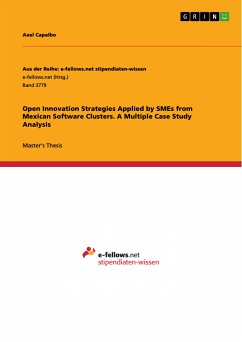Seminar paper from the year 2004 in the subject Business economics - Business Management, Corporate Governance, grade: 1,7 (A-), University of Bradford (School of Management), course: Applied Strategic Management, language: English, abstract: In 1928 Paul Galvin founded the company as the “Galvin Manufacturing Corporation” in Chicago, Illinois. The first product launch, called a “battery eliminator” allowed radio consumers to operate directly from household current instead of the batteries supplied with earlier models. But the company’s name was soon displaced through its main product, “Motorola” radios, figurehead that conjures up the historical symbiosis of a mobile radio and a car (Agar, 2003). Under the leadership of Paul Galvin, Motorola became leader in military, space and commercial communications, grew as a manufacturer of consumer electronics and built its first semiconductor facility. The company founder died in 1959. As his successor Robert W. Galvin, P. Galvin’s son, was introduced. Within his leadership Motorola expanded into the international markets, and their object of view was shifted away from consumer electronics. As a fact of this challenge, the colour-TV receiver business was sold in the mid 70’s, so that they could concentrate their abilities on high-technology markets in commercial, industrial and government fields. With the 80’s ending, Motorola had become the doyen supplier of cellular phones. (www.motorola.com) You could say, that Motorola, Inc. is a global provider of wireless, broadband, automotive communications technologies and embedded electronic products. Further on the company provides software-enhanced wireless telephone and messaging, two-way radio products and systems, as well as networking and Internet-access products, for consumers, network operators and commercial, government and industrial customers. Motorola also provides end-to-end systems for the delivery of interactive digital video, voice and high-speed data solutions for broadband operators, and embedded semiconductor solutions for customers in wireless communications, networking and transportation markets. In addition, the company offers integrated electronic systems for the automotive, telematics, industrial, telecommunications, computing and portable energy systems markets. The last reported count of employees was 88.000. (www.yahoo.com) In most parts of my strategic analysis, I will focus on the Personal Communications Segment (PCS) of Motorola, the business group of Motorola’s cellular phones. Following Nokia, Motorola is the 2nd largest mobile phone producer worldwide.








